
Filter News
Area of Research
News Topics
- (-) Neutron Science (26)
- 3-D Printing/Advanced Manufacturing (31)
- Advanced Reactors (5)
- Artificial Intelligence (46)
- Big Data (30)
- Bioenergy (18)
- Biology (24)
- Biomedical (13)
- Biotechnology (10)
- Buildings (29)
- Chemical Sciences (30)
- Clean Water (6)
- Composites (12)
- Computer Science (52)
- Critical Materials (7)
- Cybersecurity (2)
- Education (2)
- Emergency (3)
- Energy Storage (16)
- Environment (42)
- Exascale Computing (26)
- Fossil Energy (4)
- Frontier (21)
- Fusion (13)
- Grid (16)
- High-Performance Computing (45)
- Hydropower (1)
- Isotopes (17)
- ITER (2)
- Machine Learning (23)
- Materials (24)
- Materials Science (28)
- Mathematics (7)
- Mercury (1)
- Microelectronics (2)
- Microscopy (5)
- Molten Salt (1)
- Nanotechnology (2)
- National Security (34)
- Nuclear Energy (15)
- Partnerships (29)
- Physics (11)
- Polymers (5)
- Quantum Computing (20)
- Quantum Science (22)
- Security (8)
- Simulation (24)
- Space Exploration (3)
- Statistics (3)
- Summit (14)
- Transportation (17)
Media Contacts

Researchers set a new benchmark for future experiments making materials in space rather than for space. They discovered that many kinds of glass have similar atomic structure and arrangements and can successfully be made in space. Scientists from nine institutions in government, academia and industry participated in this 5-year study.

Researchers at ORNL are developing battery technologies to fight climate change in two ways, by expanding the use of renewable energy and capturing airborne carbon dioxide.

The BIO-SANS instrument, located at Oak Ridge National Laboratory’s High Flux Isotope Reactor, is the latest neutron scattering instrument to be retrofitted with state-of-the-art robotics and custom software. The sophisticated upgrade quadruples the number of samples the instrument can measure automatically and significantly reduces the need for human assistance.
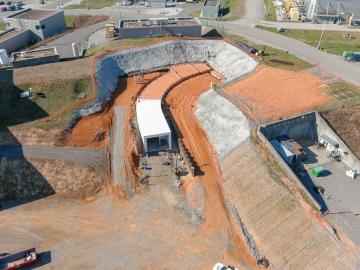
The new section of tunnel will provide the turning and connecting point for the accelerator beamline between the existing particle accelerator at ORNL’s Spallation Neutron Source and the planned Second Target Station, or STS. When complete, the PPU project will increase accelerator power up to 2.8 megawatts from its current record-breaking 1.7 megawatts of beam power.

The U.S. Environmental Protection Agency has approved the registration and use of a renewable gasoline blendstock developed by Vertimass LLC and ORNL that can significantly reduce the emissions profile of vehicles when added to conventional fuels.

Scientists at Oak Ridge National Laboratory and six other Department of Energy national laboratories have developed a United States-based perspective for achieving net-zero carbon emissions.
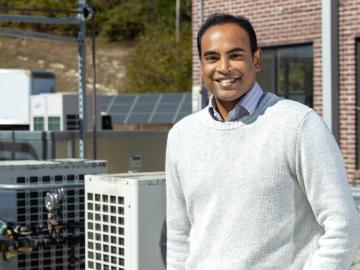
Cheekatamarla is a researcher in the Multifunctional Equipment Integration group with previous experience in product deployment. He is researching alternative energy sources such as hydrogen for cookstoves and his research supports the decarbonization of building technologies.
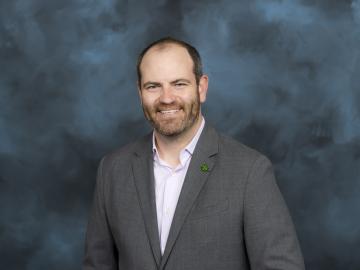
ORNL's Scott Curran, group leader for Fuel Science and Engine Technologies Research, has been named a fellow of SAE International and ASME.
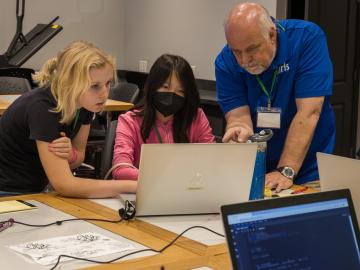
Thomas Proffen, a neutron scattering scientist at ORNL and founder of Oak Ridge Computer Science Girls, was recognized with an award from the National Center for Women & Information Technology, or NCWIT. In addition, one of his students received a national honor from the organization.
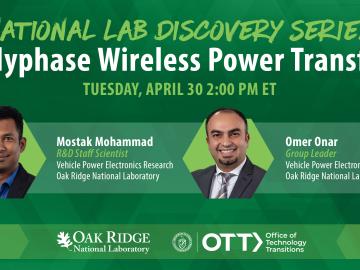
ORNL’s Omer Onar and Mostak Mohammad will present on ORNL's wireless charging technology in DOE’s Office of Technology Transitions National Lab Discovery Series Tuesday, April 30.


